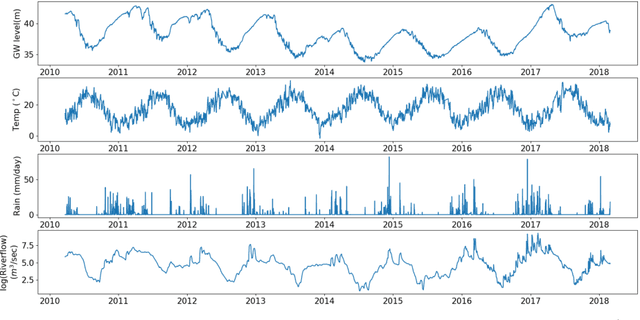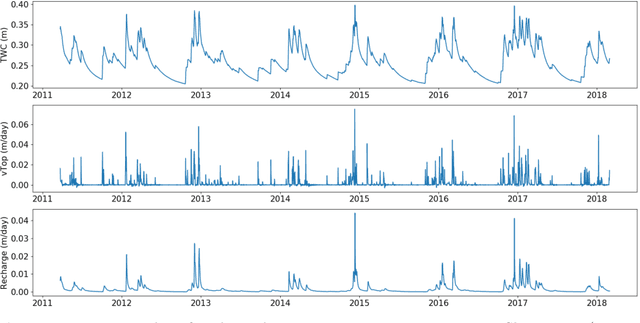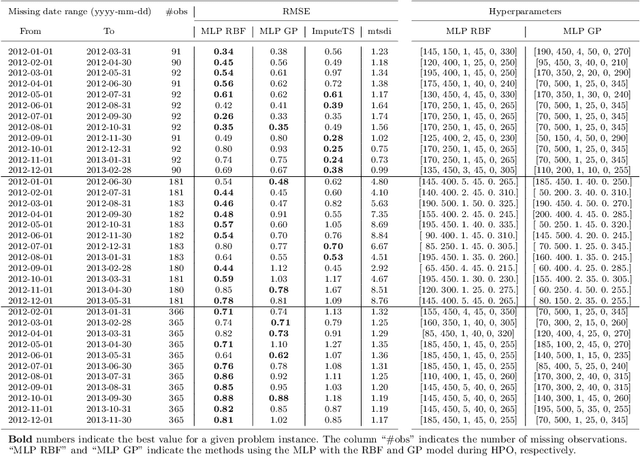Long-Term Missing Value Imputation for Time Series Data Using Deep Neural Networks
Paper and Code
Feb 25, 2022



We present an approach that uses a deep learning model, in particular, a MultiLayer Perceptron (MLP), for estimating the missing values of a variable in multivariate time series data. We focus on filling a long continuous gap (e.g., multiple months of missing daily observations) rather than on individual randomly missing observations. Our proposed gap filling algorithm uses an automated method for determining the optimal MLP model architecture, thus allowing for optimal prediction performance for the given time series. We tested our approach by filling gaps of various lengths (three months to three years) in three environmental datasets with different time series characteristics, namely daily groundwater levels, daily soil moisture, and hourly Net Ecosystem Exchange. We compared the accuracy of the gap-filled values obtained with our approach to the widely-used R-based time series gap filling methods ImputeTS and mtsdi. The results indicate that using an MLP for filling a large gap leads to better results, especially when the data behave nonlinearly. Thus, our approach enables the use of datasets that have a large gap in one variable, which is common in many long-term environmental monitoring observations.
 Add to Chrome
Add to Chrome Add to Firefox
Add to Firefox Add to Edge
Add to Edge